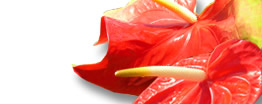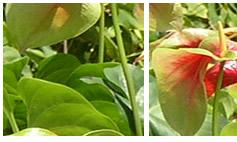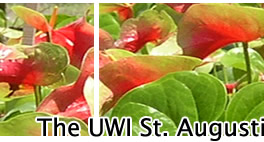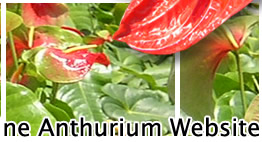|
Anthurium (Anthurium andraeanum Linden Ex André) is a slow-growing perennial that requires shady, humid conditions as found in tropical forests. It includes more than 100 genera and about 1500 species. The genus, Anthurium, is neotropical in origin, evergreen and occurs in Central, South America and the West Indies at varying altitudes and habitats. Anthurium can be climbers or assurgent, varying from arborescent to epiphytic.
Cultivated anthurium belongs to two sections viz. Calomystrium and Porphyrochitonium. The section, Calomystrium includes the popular Anthurium andraeanum (Linden) ex André, the best known among the cultivated anthurium species.
Anthurium andraeanum (Linden) ex André (the original exported anthurium) characteristically produces numerous inflorescences (spadices) subtended by brightly coloured spathes or bracts, which are carried on long, slender peduncles. The spathes are characteristically heart-shaped, flat, puckered and shiny. Although A. andraeanum (Linden) ex André has a limited range of spathe colours from orange to red, the colour range has been augmented through interspecific hybridisation with other anthurium species belonging to the sections Calomystrium and Porphyrochitonium mainly in the Netherlands and Hawaii, USA. The commercially cultivated anthuriums hence are complex interspecific hybrids, collectively referred to as Anthurium andraeanum (Hort.).
Growth and development:
Anthurium development proceed in two phases, the monopodial growth phase and the sympodial growth phase. Two growth patterns differ in shoot organization and branching patterns. The monopodial phase occurs during the juvenile period prior to the onset of flowering, while the sympodial phase begins at flowering, where one cut-flower is produced from each leaf axil, independently, beneath each new leaf, a new root forms.
The leaves:
The cultivated anthurium species are erect plants that have petiolated, lobed and cordate green leaves of variable size. The leaves have a reticulate venation with a prominent midrib, lateral veins and a well-defined leaf margin. The anthurium plant possesses an underground rhizome with adventitious roots, characteristic of the Araceae family. The arrangement of the foliage leaves is spiral, either clockwise or anticlockwise.
The inflorescence and pollination:
The anthurium cut-flower comprises an inflorescence (spadix) subtended by a modified leaf (spathe) borne on a long stalk (peduncle). Anthurium andraeanum (Hort.) flowers have a wide range of spathe colours: white, rose, salmon-pink, red, light-red, dark-red, brown, green, lavender, cream or multi-coloured. There are also variations in the shape and firmness of the spathe varying from flat to cup-shaped and firm to floppy.
The ‘true’ flowers are found on the spadix and have large numbers of pistils, each surrounded by four stamens. The ‘true’ flowers are bisexual and protogynous, with the spadix first producing a female phase followed by, after about a month, a male phase. This prevents self-pollination of the flowers and as such, anthuriums are cross-pollinated. Bees, beetles, flies and ants effect pollination under natural conditions. Six months after pollination, coloured berries develop on the spadix, bottom upwards.
Propagation:
Each berry contains one or two seeds that can be planted to generate heterozygous and heterogeneous seedlings. Anthurium also reproduces vegetatively through suckers, which arise around the base of the stem. The suckers are identical to the mother plant and to each other. Many anthurium cultivars do not produce suckers or produce very few. Vegetative propagation can also be achieved through the use of ‘toppings’ or micro-propagation techniques.
|




